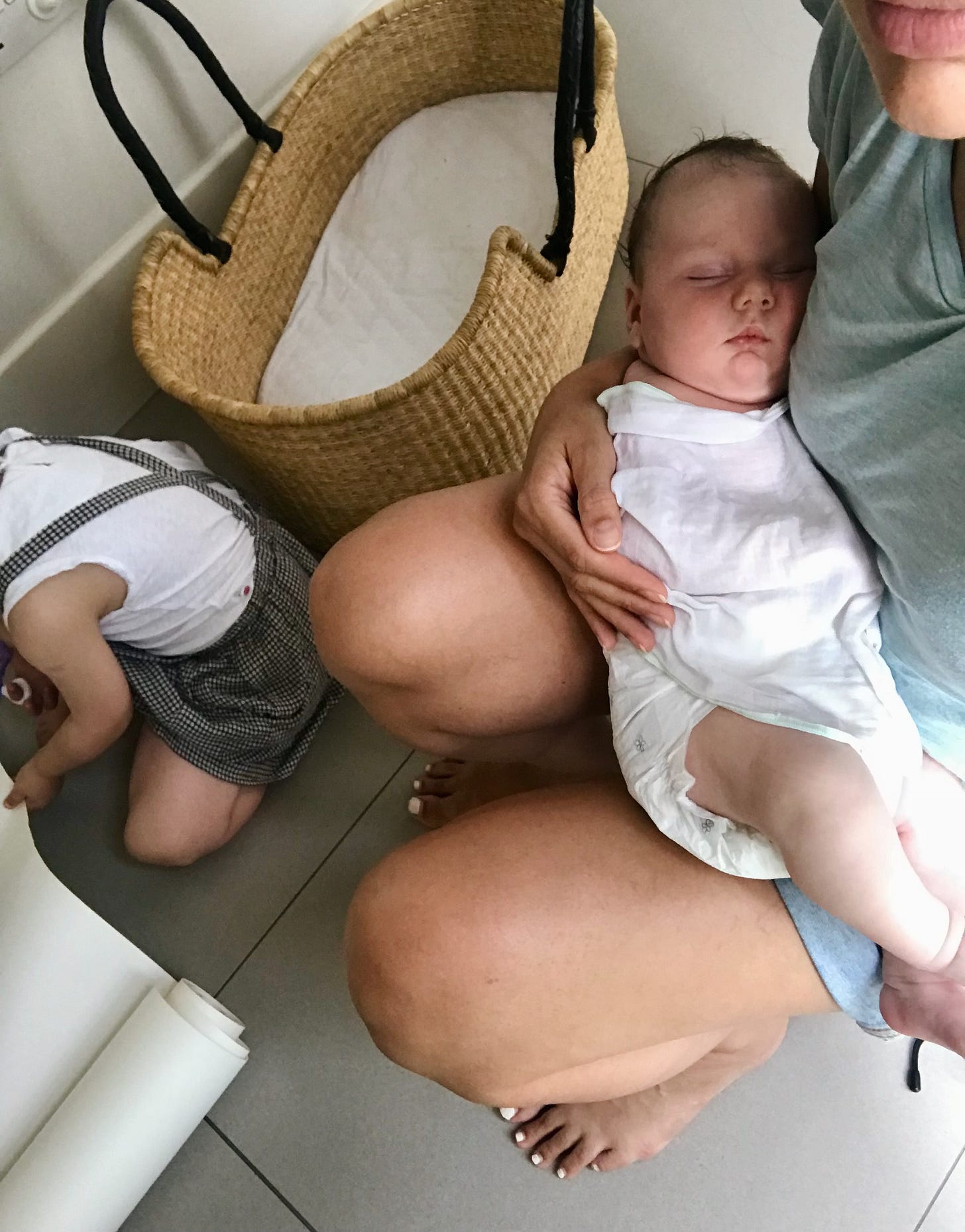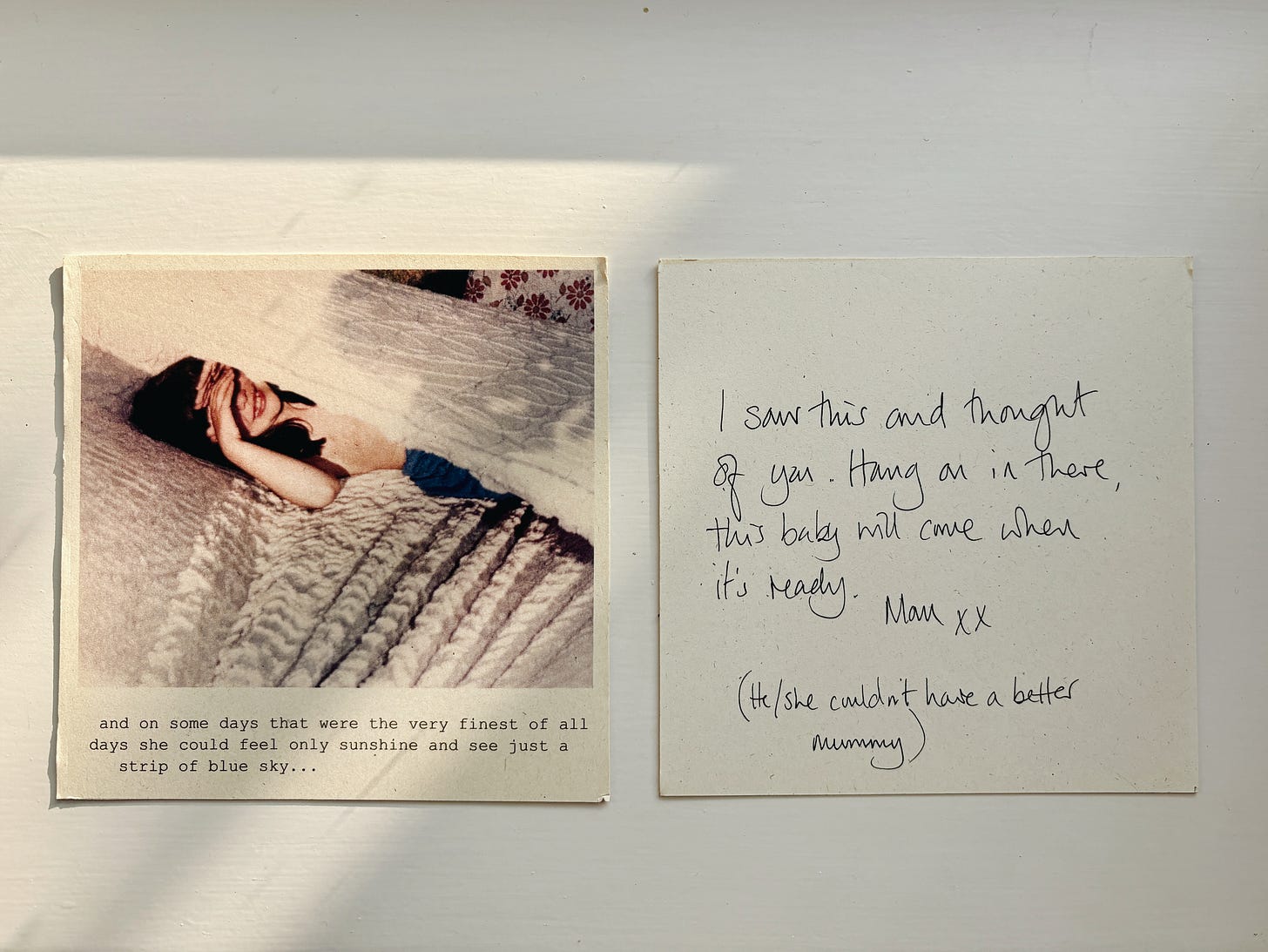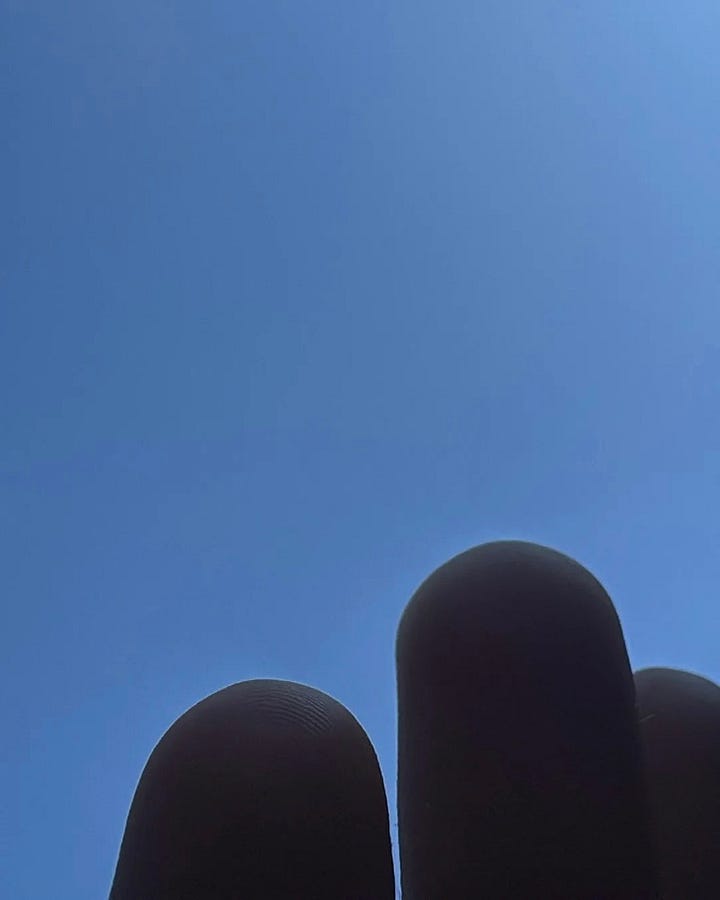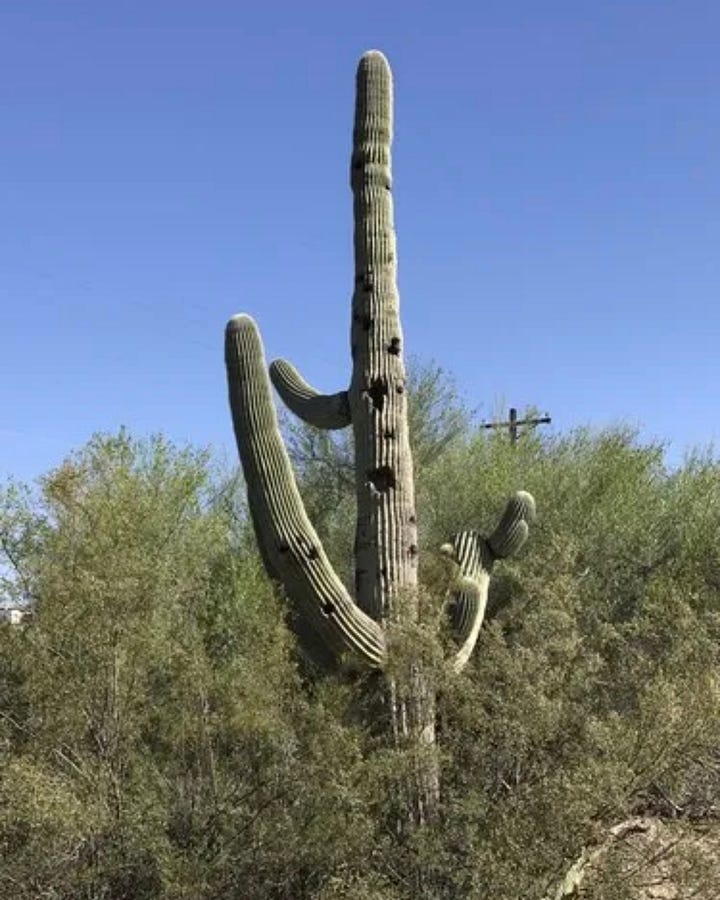Ripening and Rooting
Notes from a soupy, slightly feral few weeks including some apps that spark curiosity, a summer recipe and some wild visitors.
Words failed me through June.
At the beginning of the month I turned 42 and I had the sense that overnight I went from being in late postpartum into the beginning of peri-menopause without a gap or even a dividing line between the two and in the confusion my ability to think a concise thought and put it into words abandoned me.
I’m working out how to navigate this overlap and will write about it at some point but for now I just need to force some words onto the page and this is what came out. Verbose and bloggy but done and delivered to the world at least.
*
It was my son’s 7th birthday on Monday and a height-of-the-heatwave day like the one he was born into. It was 27 days before he saw rain for the first time. Quite remarkable for a British-born lad.
The grass was yellow, the horseflies buzzed and batted manically at the windows. Linseed was growing in the fields and poppies nodded at the roadside.
As he lay on my chest I scrolled through websites to find the last remaining fans in stock. He still sleeps next to me and on his birthday night I flicked the fan to its highest setting while he fidgeted out his ice-cream sugar high.
I made him pancakes for breakfast. The coconut oil I fry them in was already liquified from the heat where normally I scoop a solid lump from the jar.
Meanwhile, the onions are sprouting and smelling at the bottom of the pantry cupboard and when I opened the compost caddy flies flew out.
This is heat that we’re not accustomed to or set up for in the U.K. It’s not for everyone but I I like this melting point sensation where the mugginess becomes a bit oppressive and everything quietens and stills. The same goes for when it snows too. Safe in the knowledge that everything will return to normal within a day or two.
The physicality of it is a lot to deal with when life and particularly children require you carry on as usual, but I like the hazy shift away from normality that a heatwave causes in a country that isn’t used to heat - the sense that humans are quite easily overpowered by nature. I feel ripened by it. Embracing the sultriness feels like biting into a softened peach and letting the juice drip down your arm.

My family are the same. Not my kids – based on nothing more substantial than his preference for the cold and his blue eyes, we have come to the sketchy conclusion that my husband descended from Vikings and my kids have inherited his aversion to heat.
But my parents, by contrast had us basking like lizards from the moment we were Earthside.

A friend mentioned Find My Past at the weekend. Like Ancestry, it’s a website and app that helps you build your family tree, but Find My Past is more specific to British and Irish family history.
I downloaded it last night in the hope of seeking out some exotic lineage to explain this heat-love but so far it seems I’m the first person to leave Birmingham in well over a century. Once I started digging I couldn’t stop, and I was up past midnight tracking back in time along my matrilineal line.
I met my great-grandmother as a child and have one vague memory of her sitting on a chair in my nan’s dining room. To see five generations of females mapped on a family tree and to have met them all feels substantial. And to notice that we all have first names ending in ‘a’ by pure coincidence feels like a thread that ties us together. (In case you’re wondering – Clara, Elma, Galia, Jessica and Eliana.) I’ve shelled out on a three-month subscription so I’m planning on doing a deep dive and will report back.
Speaking of apps – the good kind that spark curiosity rather than comparisonitis - in the past couple of years I have started teaching myself about my local biosphere using the Picture This plant identifier app. I use it to discover the witchy names of summer wildflowers – Starwort and Bird’s Foot Trefoil - the mushrooms in the autumn and trees all year round.
My three-year-old is obsessed with it too although doesn’t always get his focus right. The other day he took a photo of the blue sky with his fingers in shot, and they were identified as a cactus. ‘This plant looks healthy!’ it said.
I downloaded the bug version last week to identify the snakefly that I found in our bedroom. (It’s not as alarming as it might sound but it does have a strangely long neck, and they used to hang out alongside the dinosaurs.)


Ladybirds metamorphose. Did you know that? I only found out a few years ago and it has come as news to a lot of adults I’ve spoken to recently. We have examples of them at every stage on our raspberry plant which is itself fecund this year. The sun brings out the urge to create abundantly in all of us.
Something happens in my body when I pick the fruit – a remembering that runs deep and soothes the soul. These aren’t the large, water-filled, supermarket raspberries. They’re small, oxblood red when fully ripe and best eaten sun-kissed, straight from the bush, after dusting off the aphids.
I’m waiting on the gooseberries and although I’m not big on baking (I prefer to remain ignorant to the content of cake), this gooseberry and almond cake with lemon thyme syrup from How to Eat a Peach: Menus, Stories and Places by Diana Henry is becoming an annual dish. Totally delicious.
All this has rooted me in this area of ancient woodland that felt uncomfortably messy compared to the uniformity of our London home when we first moved here. At first, I wondered why no-one came to clear the large, old trees that fall with surprising frequency in the woods. Now I love the ever-changing chaos of it all.
But the chaos needs containing. Last Sunday was road tidy day on our cul-de-sac - a private road bordering National Trust woodland. The trees are under the care of the trust; the road maintenance is the responsibility of the Resident’s Association. It’s very quaint and very official.
We go out en masse with our brooms, shovels and leaf-blowers to tidy up which mostly involves pushing the forest back into the forest. My neighbour cut back the nettles while I shovelled horse manure and the dirt that had spilled over from the woodland floor onto the tarmac, narrowing the divide between human space and the wild.
I often imagine how long it would take for nature to engulf our house if humanity were to die out and our obsessive neatening were to cease.
Not long, I think.
Last week a magpie came in through our open glass doors and made a racket and a mess trying to flap its way out again. A little while back a pheasant found its way into the spare bedroom. Tendrils of wisteria are reaching into the gutters and butterflies have made their way into our kitchen daily this week (it feels like there are more of them everywhere this year - I hope I’m right).
To prove my point, I paused to reheat my tea just now and found this Red Admiral in the kitchen. I coaxed it back outside with the softest ostrich-feather duster that we keep on standby for exactly this job.
A thought passed through my head – are these creatures trespassing in my territory or am I in theirs? - before I remembered there is only one space for us all.
This is why the wellbeing experts tell us to walk in nature - to keep reminding ourselves that the boundary that we have put between humans and the rest of nature doesn’t actually exist. I used to be spirituality adverse until I realised it’s as simple as acknowledging this truth. It’s a fact too quickly and easily forgotten in this mad world but one that can always be relied upon to bring us back home to ourselves.







